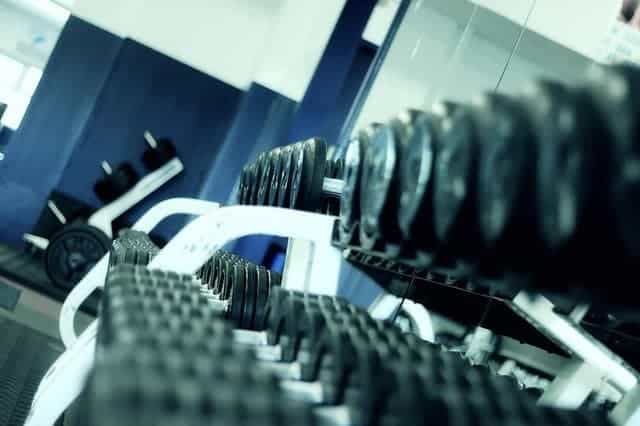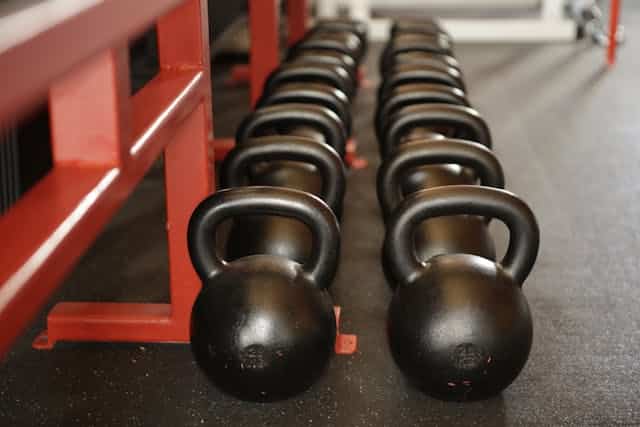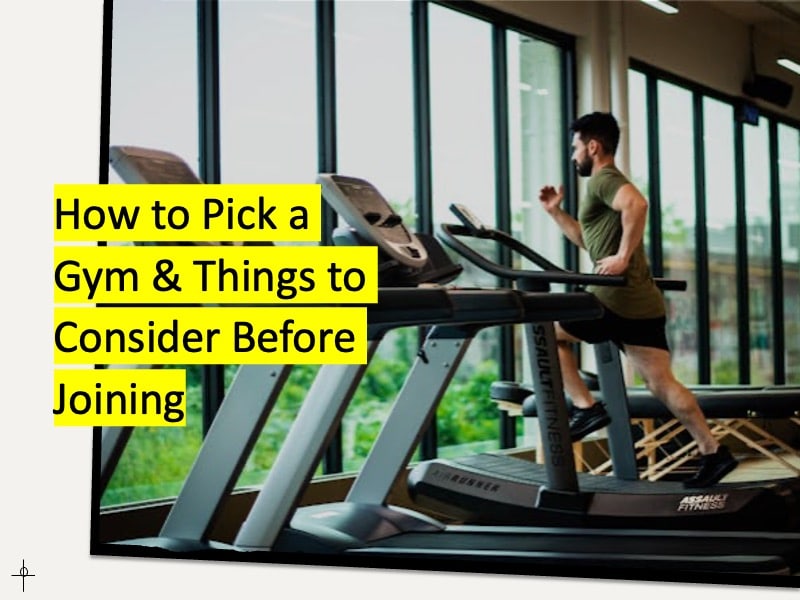How to Pick a Gym & Things to Consider Before Joining
Joining a gym is one of the most effective ways to stay committed to a fitness journey, providing access to specialized equipment, expert guidance, and a community of like-minded individuals.
While some people prefer to set up a home gym for the convenience of working out anytime, a gym membership offers unique advantages.
Gyms offer a diverse range of equipment that’s difficult to replicate at home without substantial investment.
The motivating environment, structured classes, and opportunities for social interaction create an immersive experience that can enhance both commitment and performance.
Plus, with trainers on hand to guide technique and ensure safety, gyms can offer a sense of direction and accountability that is harder to achieve in a home setting.
However, selecting the right gym is essential to fully reap these benefits. Joining a gym too quickly without thoroughly considering factors like location, amenities, atmosphere, and community can lead to disappointment and wasted resources.
The right gym is one that aligns with your personal goals, schedule, and preferences.
By taking the time to evaluate and choose a gym that fits well with your needs, you create an environment where you’re motivated, comfortable, and inspired to reach your fitness potential.
Here’s a guide to help you navigate the essential factors in finding a gym that will truly support your long-term success.
Location and Accessibility
Finding a gym in a convenient location is one of the biggest determinants of your success in staying committed.
The closer and more accessible the gym, the easier it is to integrate workouts into your daily routine.
Proximity to Home or Work
A gym located near your home or workplace eliminates lengthy commutes, making it easier to fit workouts into a busy day.
A conveniently located gym encourages consistency, and proximity can reduce the temptation to skip workouts due to travel time.
If you’re considering a gym that’s further away, factor in how often you can realistically commit to attending each week without added strain.
Access and Safety Considerations
In addition to location, safety and accessibility should be top of mind. Look for gyms in safe, well-lit areas, especially if you’ll be going during early morning or late evening hours. Additionally, ensure the gym has secure entry systems, clear signage, and emergency response protocols.
Some gyms provide 24-hour access, which can be ideal if you have a fluctuating schedule, but be sure they also have security measures in place during off-hours.
Hours of Operation
The hours of operation of a gym can make or break your workout consistency, especially if you have a non-traditional work schedule. Understanding a gym’s availability and staffing during different hours helps you decide if it aligns with your needs.
24-Hour Access vs. Standard Hours
For those with busy or inconsistent schedules, gyms with 24-hour access offer the flexibility to work out whenever it’s convenient. This can be ideal if you prefer working out during off-peak hours or late at night.
However, consider if you need trainer supervision or prefer a vibrant atmosphere, as off-hours might lack staff and fellow gym-goers.
On the other hand, gyms with standard hours often have more structured class schedules and a consistent staff presence, which can be helpful for beginners.
Membership Perks and Benefits
Membership perks can add considerable value to your gym experience, from group classes to wellness services.
Included Amenities
Many gyms offer more than just workout equipment. Membership perks may include access to pools, saunas, steam rooms, and even perks like complimentary coffee or juice bars.
For example, if you enjoy relaxing in a steam room or sauna post-workout or require childcare services while you exercise, check that these amenities are available.
Gyms with comprehensive wellness options like massage services or physical therapy can also add significant value if you have rehabilitation or recovery needs.
Classes and Training Programs
Classes and training programs can keep your workouts engaging and varied. Group classes like yoga, spinning, or boxing can introduce new movements to your routine while also creating a social element.
Many gyms also offer specialized training programs led by certified instructors.
Whether you prefer HIIT, Pilates, or Zumba, look for a gym that provides a variety of class options to keep your fitness routine exciting and challenging.
Cleanliness and Maintenance
A clean and well-maintained gym is essential for a positive and hygienic workout environment.
Gyms that prioritize sanitation and upkeep create a safer space, reduce equipment downtime, and enhance your overall experience.
Sanitation Standards
Gyms are high-traffic areas, making cleanliness a top priority. Look for gyms that emphasize sanitation, with disinfecting wipes, hand sanitizers, and regular cleaning protocols.
A gym that prioritizes cleanliness is less likely to expose you to bacteria and viruses, making it a healthier environment.
Check if the gym visibly posts cleaning schedules or employs dedicated staff for sanitation.
Condition of Equipment
Properly maintained equipment is vital for both safety and effectiveness. Inspect equipment for signs of wear, such as frayed cables, rust, or squeaking parts, as these issues indicate inadequate maintenance.
Well-maintained machines operate smoothly and safely, enhancing your experience and reducing injury risk.
If possible, test out a few machines during a tour to get a feel for their quality and reliability.
Quality of Equipment and Facilities

The quality of a gym’s equipment and facilities can significantly impact the efficiency and enjoyment of your workouts.
A gym that invests in updated, well-maintained equipment provides you with more training options and a better overall experience.
Equipment Variety and Availability
Having access to a variety of equipment means you can tailor your workouts to meet specific fitness goals.
Whether you focus on strength training, cardio, or functional fitness, ensure the gym has a range of free weights, cardio machines, and specialty equipment like kettlebells and battle ropes.
Additionally, the availability of equipment during peak hours is a crucial factor to consider, as overcrowded spaces can hinder your progress.
Additional Facilities
Facilities beyond the workout floor, such as locker rooms, showers, and pools, add convenience and comfort to your gym routine. If you like to swim or recover in a sauna, look for gyms that offer these amenities.
For parents, gyms with on-site childcare facilities can make workouts more accessible.
Ensure these areas are clean, well-maintained, and adequately stocked with essentials like towels and lockers.
Atmosphere and Community
The atmosphere and community of a gym play a substantial role in how motivated and comfortable you feel in the space. Gyms have unique cultures, from high-energy environments to relaxed, friendly settings.
Gym Culture and Member Demographics
Each gym has its own culture, shaped by the staff, members, and even the type of music played. A gym’s culture can range from intense and competitive to laid-back and supportive.
Take the time to observe the general vibe and see if it resonates with your preferences. Some people thrive in a high-energy environment, while others prefer a calm space where they can work out independently.
Supportive Community and Social Aspects
For those who value social interaction, a gym that encourages community through group classes or events can make workouts more enjoyable and motivating. A supportive gym community can boost accountability and help build friendships, enhancing the experience. Look for a gym that fosters a sense of community, which may be especially helpful if you’re just starting your fitness journey.
Cost and Contract Terms
Understanding the cost structure and contract terms is essential for choosing a gym that aligns with your budget.
Beyond the initial fees, factor in hidden costs and flexibility options that could impact your long-term satisfaction.
Pricing and Payment Flexibility
Gym membership costs vary widely, so it’s important to understand the breakdown of fees and payment options. Some gyms offer affordable monthly rates, while others have higher fees but include additional amenities.
Look for transparent pricing structures, and consider any potential add-on costs for specific classes or access to special facilities.
If budget is a concern, many gyms offer discounts for paying annually or allow flexible month-to-month memberships.
Cancellation Policies and Commitment Length
Contract terms vary, with some gyms requiring long-term commitments and others offering more flexible, month-to-month options.
If you prefer flexibility or are unsure about a long-term commitment, avoid gyms with strict cancellation policies or hidden fees.
Reading the fine print can save you from unexpected costs if you decide to switch gyms down the line.
Taking Advantage of Free Trials
Taking advantage of a trial period or guest pass options can be instrumental in helping you make an informed decision. These features allow you to get a feel for the gym’s facilities, equipment, and atmosphere without committing right away.
Most gyms offer a free trial period, allowing you to assess the equipment, test out classes, and meet staff members. During this trial, evaluate the cleanliness, wait times, and accessibility of the equipment.
This experience helps you decide if the gym meets your expectations and provides the tools you need to succeed.
Guest Pass Options
Guest passes can be a valuable perk if you like working out with friends or family. Many gyms offer limited guest passes, allowing you to bring a workout partner who can enhance motivation and accountability.
Guest passes also let you introduce friends or family to the facility, which can be a deciding factor if you plan to work out with others regularly.
Additional Considerations for Specialized Gyms

For those with specific fitness goals or interests, a niche gym may offer a more tailored experience.
Specialized gyms provide an environment focused on specific training styles, like CrossFit, powerlifting, or yoga, which can be beneficial if you’re dedicated to a particular discipline.
Niche Gyms vs. General Gyms
Specialized gyms cater to specific fitness interests, providing equipment and classes focused on those areas. For instance, powerlifting gyms may offer specialized racks, while yoga studios often create a calming atmosphere.
Evaluate if a niche gym aligns with your fitness priorities or if a general gym with diverse offerings is more suitable for a well-rounded workout regimen.
Reputation and Reviews
Researching reviews and asking for recommendations can give insight into a gym’s reputation.
Feedback from current members can reveal a lot about the quality of the facilities, staff, and maintenance.
Look for reviews that mention aspects important to you, such as equipment condition, cleanliness, and customer service.



